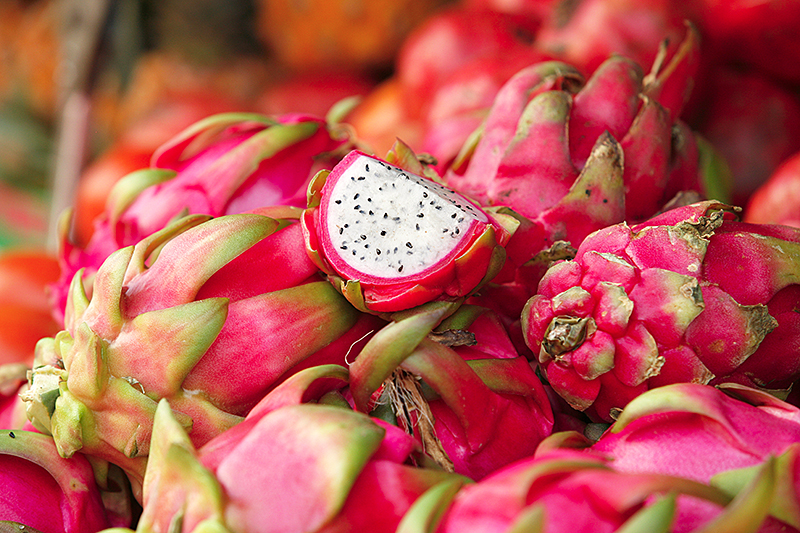Dragon fruit is any of a number of plants within the cactus family that bear visually striking fruit of the same name. The fruit may be covered in scales or spines and varies from red to pink to yellow in color. It may weigh up to about 28 ounces (800 grams). The fruit’s pulp is white to magenta and contains numerous soft, edible black seeds . People eat the fruit fresh and use it in juices.

Dragon fruit plants are climbing vine cactuses with stems that are triangular in cross section. The vines have no leaves . The green to greenish-blue stems use light from the sun to make food. The stems have ridges that may contain one to eight short spines. New branches and flowers arise from these ridges. The plant uses aerial roots to capture moisture and nutrients. The roots also support the plant as it climbs through trees. The plant’s white to pink flowers are showy and fragrant. They are among the largest flowers of cactuses, reaching up to 12 inches (30 centimeters) in diameter. The flowers only bloom at night. Bats help pollinate dragon fruit.
The native range of dragon fruit stretches from northern South America to southern Mexico , where it has been grown since before the first European explorers arrived in the Americas. It naturally grows in tropical rain forests , but farmers now grow it as a crop in tropical and subtropical climates worldwide.
Dragon fruit is rich in calcium , fiber , phosphorus , and vitamin C. It is also rich in chemicals called antioxidants .
